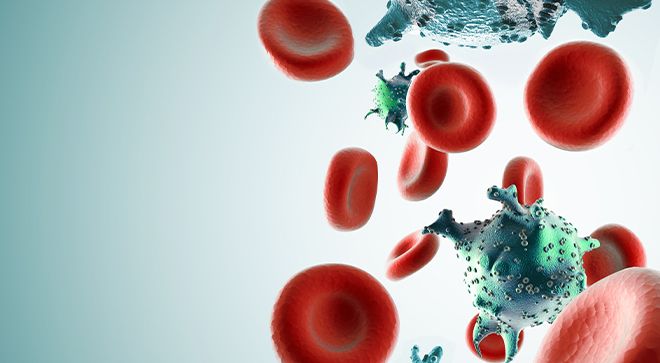Article
The Road Ahead for Ovarian Cancer
Author(s):
Opening the 20th Annual Ovarian Cancer National Conference in Chicago, John Moroney, M.D., underscored the challenges that remain in the early detection and treatment of ovarian cancer, but also the tremendous hope that resides in robust clinical trial research.
Opening the 20th Annual Ovarian Cancer National Conference in Chicago, John Moroney, M.D., underscored the challenges that remain in the prevention, earlier detection, and treatment of ovarian cancer, but also the tremendous hope that resides in robust clinical trial research.
“There are numerous early-phase clinical trials with targeted therapies that are by and large more tolerable and do not compromise quality of life that I think are the way forward,” Moroney told a packed ballroom at the conference, held July 7-9. “That is why I am such a proponent of early clinical trials. I think these offer people the best personal option, and then, of course, they have the benefit of helping everyone around you and the people behind you who are getting this diagnosis.”
Moroney, an associate professor of obstetrics and gynecology specializing in gynecologic cancers at University of Chicago Medicine, delivered this year’s Mello Abrams Lecture, established by Jay Schwamm to honor both his wife Judy Mello, who lost her life to ovarian cancer, and ovarian cancer advocate Judith Abrams.
“As survivors and family members you are aware — perhaps too aware – of what it takes to get through this disease,” Moroney said. Nevertheless, he set an optimistic tone for better treatments ahead, but cautioned that such progress will depend on an expansion of clinical trial research focused on gynecologic cancers.
There are about 24,000 new ovarian cancer diagnoses annually, and while the numbers are small compared with other gynecologic cancers, the disease is much more virulent. Eighty percent of patients are diagnosed at stage 3 or 4, and most women diagnosed at advanced stages recur.
“If we could find more stage 1 or 2’s, that would make a huge difference, but the development of an effective strategy for early detection is very challenging,” Moroney said, in part because ovarian is relatively rare compared with breast and endometrial cancers, and unlike colon cancer, there is no predictable pathway from pre-cancer to cancer.
“Most survivors have told me, ‘There was no way to tell that there was something wrong, until it was advanced.’ This is heartbreaking, but a reality for most patients.”
Thus far, studies of early screening methods like annual CA 125 testing, ultrasounds or both have not proven helpful or yielded overall survival benefits, though he acknowledged that there were likely people in the audience whose individual experience defy these statistics on screening.
The Risk of Ovarian Cancer Algorithm (ROCA), he said, is “probably the way forward,” following on two very large screening trials involving average-risk patients, including one involving 202,000 patients in the United Kingdom. Moroney said that though it did not demonstrate an overall survival advantage, “it did — and this is very important – describe what’s referred to as a ‘stage shift,’” whereby a higher number of patients receiving multimodal screening were diagnosed with early-stage cancers. The proprietary ROCA algorithm yields a score, based annual CA 125 levels along with other demographic factors like age and family history; the score determines what and when additional screening is warranted.
Beyond aging, consensus is lacking on other risk factors for ovarian cancer, Moroney said; for example, obesity and endometriosis are likely contributory, whereas talc use remains controversial, hormone replacement therapy may increase risk, and oral contraceptive use decreases it.
The consensus is clear, however, that heritable gene mutations are a risk factor and responsible for 15 to 25 percent of ovarian cancers. Research is ongoing into other druggable targets beyond BRCA, hyperthermic intraperitoneal chemotherapy (HIPEC), immunotherapy, and drug combinations.
Although there are no FDA-approved maintenance therapies after primary treatment for ovarian cancer in the U.S., it continues to be an area of interest and investigation, Moroney noted, “with multiple clinical trials with drugs vying for this space.”
For recurrent disease, however, the PARP inhibitor Zejula (niraparib) was approved by the FDA in March, 2017, for the maintenance treatment of adult patients with recurrent epithelial ovarian, fallopian tube, or primary peritoneal cancer who are in complete or partial response to platinum-based chemotherapy. The indication for Avastin (bevacizumab) was expanded by the FDA in December, 2016, for treatment of platinum-sensitive patients in combination with chemotherapy, followed by Avastin maintenance.
Also in December, 2016, Rubraca (rucaparib) was granted an accelerated approval from the FDA to treat patients with BRCA-positive (either germline or the tumor itself) advanced ovarian cancer who have received at least two prior lines of chemotherapy. Olaparib, the first PARP inhibitor on the market, was approved in December, 2014, for BRCA-mutated patients with three or more prior therapies.
In the realm of immunotherapy, early studies on the use of CAR T-cell therapy in ovarian cancer have had disappointing results so far, Moroney said, but, “as the technology behind the therapy improves, we hope that the responses will be better.” Checkpoint inhibition is moving beyond PD-1 and CTLA-4 inhibitors to include a host of new targets, he added.
“There are numerous other targets; this is the hottest area of cancer medicine with respect to new targets…they are not prime time now, but the hope is that some of these inhibitory, inactivating drugs will make a difference.”
Recently reported trial findings showed that the PD-1 inhibitor Keytruda yielded a 10 to 15 percent response rate in biomarker-positive ovarian cancer. What’s notable, however, Moroney said, is that “those patients who did respond tend to have very durable responses. If we can pick the right patients, based on their tumor genomics, we can make a huge difference.”





